We are making good use of the long daylight hours, but although we have visited this area of Ireland several times before, I am sure we are missing many exciting sights in and around Donegal. We are having so much fun as Ireland continues to amaze us.
In a mere two days, we visited a stone ring fort, a famine village, and a stone circle, as well as the thought-provoking Doagh Famine Village. We also spent time with our fabulous hosts at the Red Row Burnfoot B&B; this was an enjoyable few days.
Grianan of Aileach
As we reached Burnfoot, the town where the B&B is, we could see the magnificent ring fort of Grianan of Aileach on top of a nearby hill. This ring fort, built in the late 8th or early 9th century, was restored in the late 1800s and is in excellent condition.
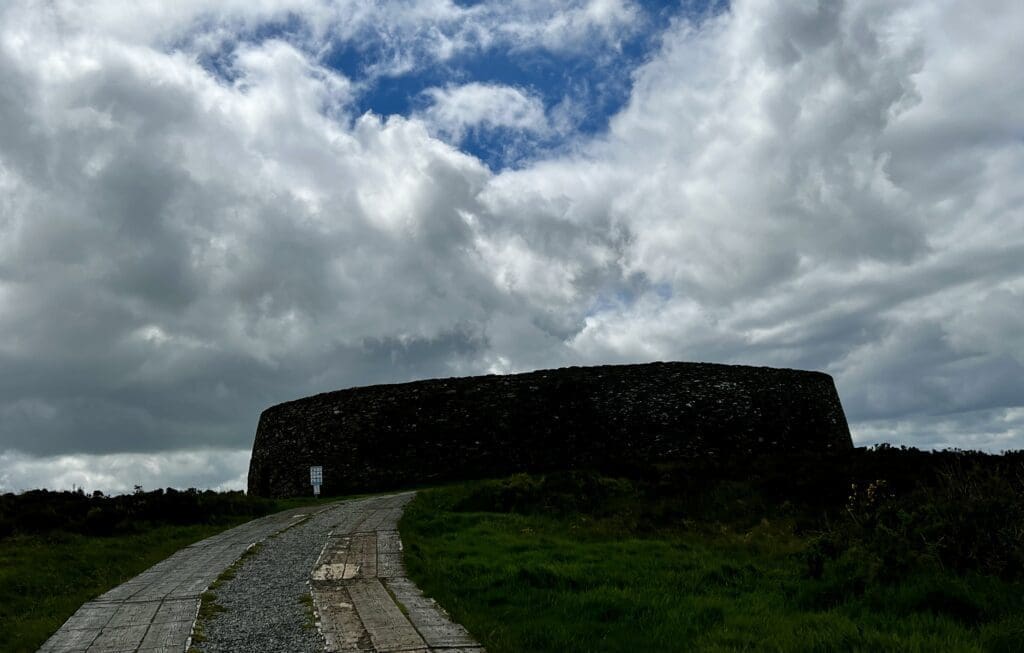
Grianan of Aileach ring fort
We took a narrow, twisty, windy road up to the top of Greenan Mountain to visit the Grianan. When we finally reached the parking lot at the top, we discovered a packed school bus of students already touring the area—a school bus on that road!
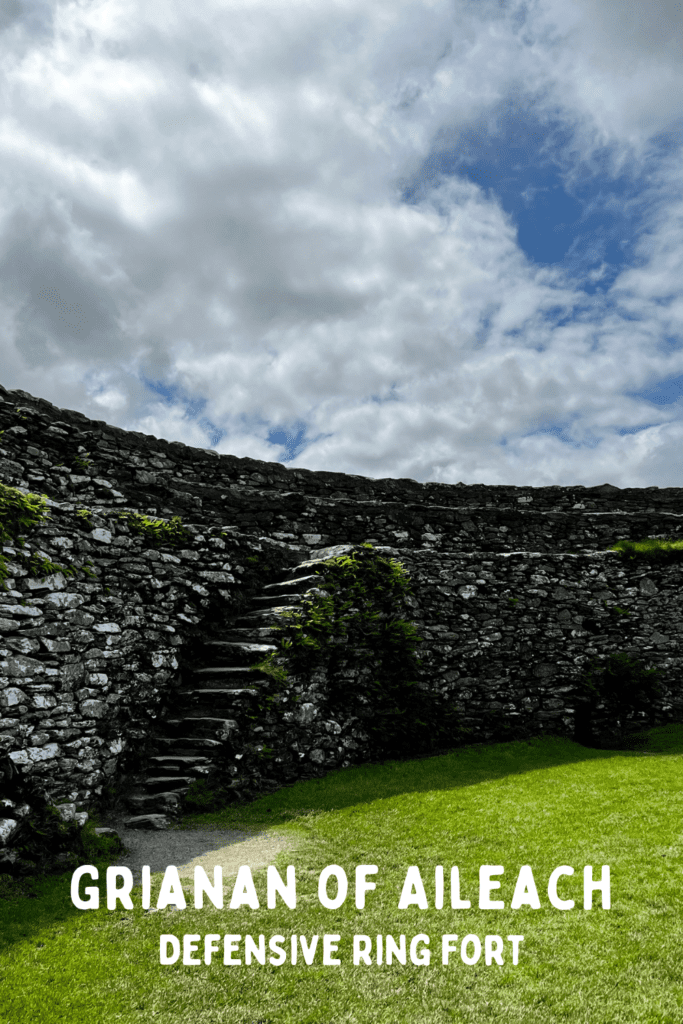
The walls of Grianan are a whopping 15 feet thick and 16 feet high. As is often the case with structures in Ireland, we learned that an even older hillfort existed at this site. Also, a burial mound and a holy well are nearby.
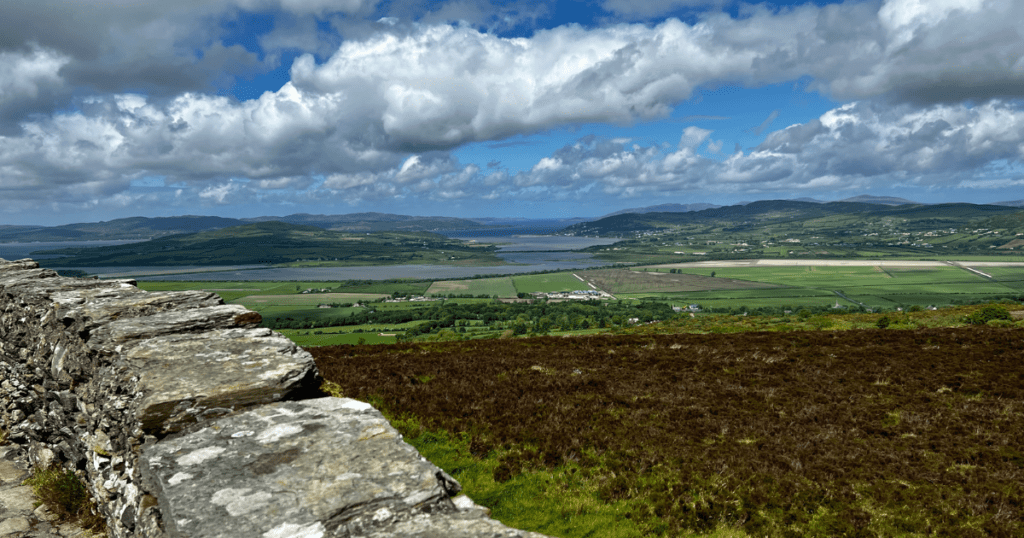
The view at Grianan is incredible. Locals told us five counties are visible from the top of the ring fort. The afternoon of our visit was very chilly and extremely windy, but we stayed up there gazing at the beautiful landscape for a long time. We even managed to find a geocache here also!
Red Row House B&B
We left the ring fort and drove a short distance to our home, the Red Row House B&B, where we would stay for the next few days. Red Row House is a modern family home. At least four rooms, including en suite rooms and shared bathroom rooms, are available for rent.

Our room was delightful, beautifully decorated, and spotlessly clean. It had large windows that opened to the back of the house and its garden. The bathroom was also quite large. Our host, Maria Boyle, and her other family members welcomed us. They are an extraordinary family.
Steve especially enjoyed visiting with Maria’s Dad. He was kind enough to drive us to the local pub, Foot Pub, one evening for a few pints—what a great experience and display of hospitality. We truly enjoyed our time at Burnfoot.
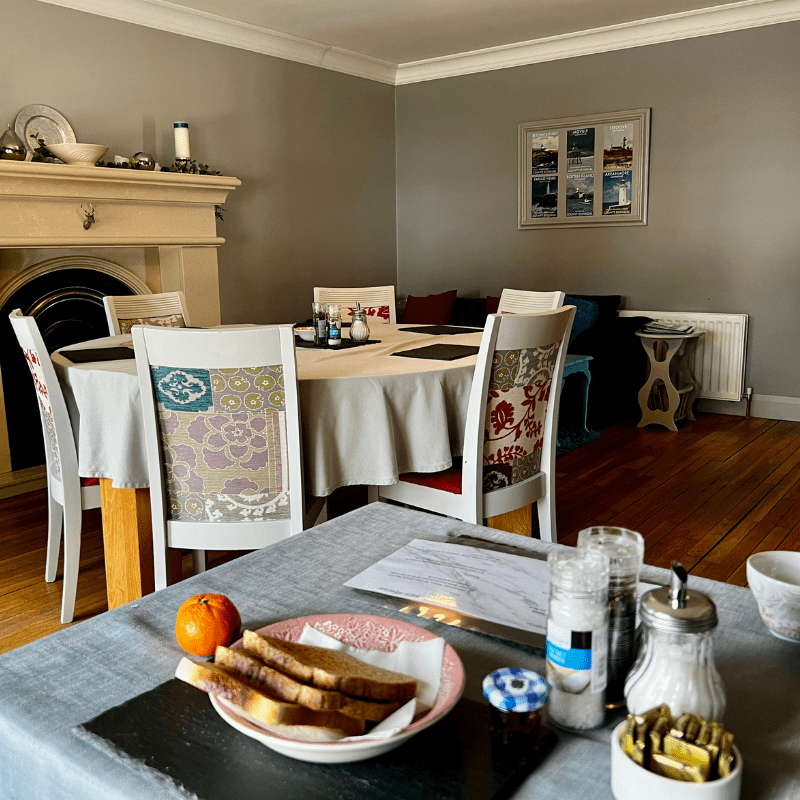
Of course, the breakfasts were outstanding and very filling. Maria provided a booklet in each room with information about attractions and history in the area. It was very comprehensive, well-thought-out, and appreciated.
Bocan Stone Circle
This stone circle was on our list of things to see in this area. We made the 30-minute drive from the B&B to it using our GPS but had some difficulty finding it. It turned out to be behind some buildings and not easily seen from the road.
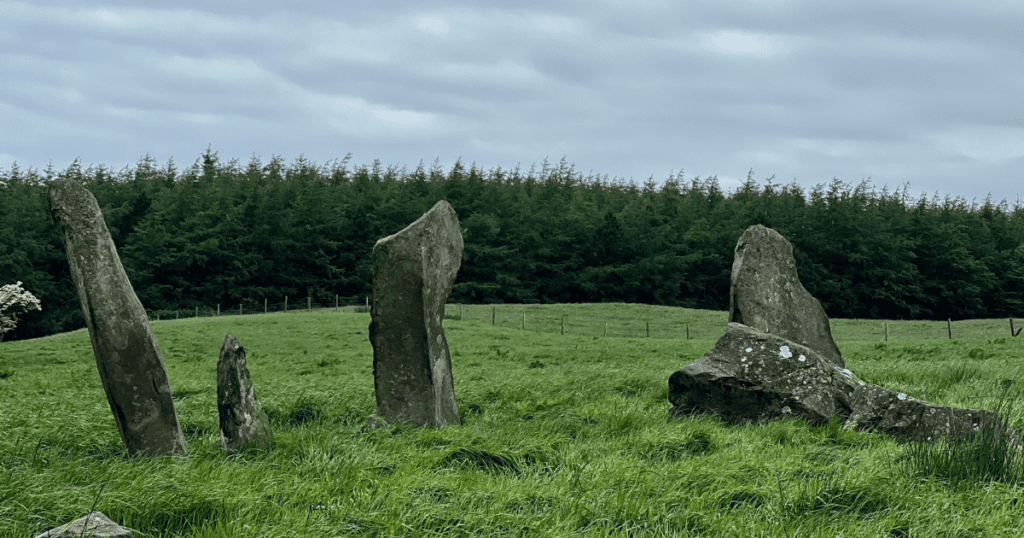
When we finally located the field where the stones were, we drove as close as possible but still were required to walk some distance up the hill in the drizzling rain. The grass was pretty high, and our shoes and clothes were soaked when we reached the stones.
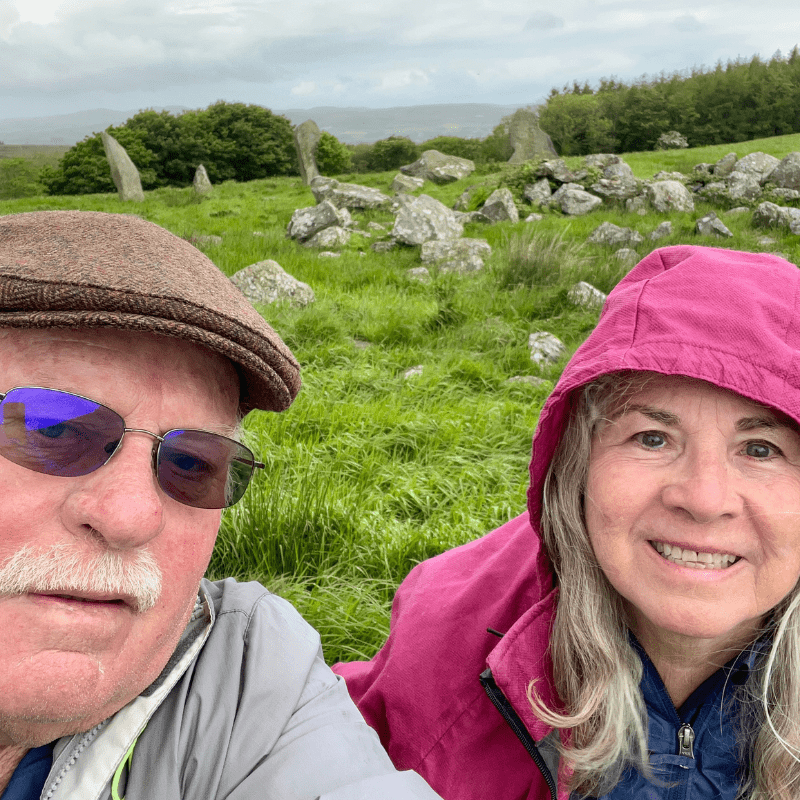
It may not sound like much fun to hike through a soggy and muddy field in the chilly, drizzling rain, but it was exciting to find these ancient standing stones that had been in place between 1500 and 2500 BC.
We must have been quite a sight, two old folks standing out in the rain gazing at standing stones! However, even our soggy shoes were completely dry again in a few hours.
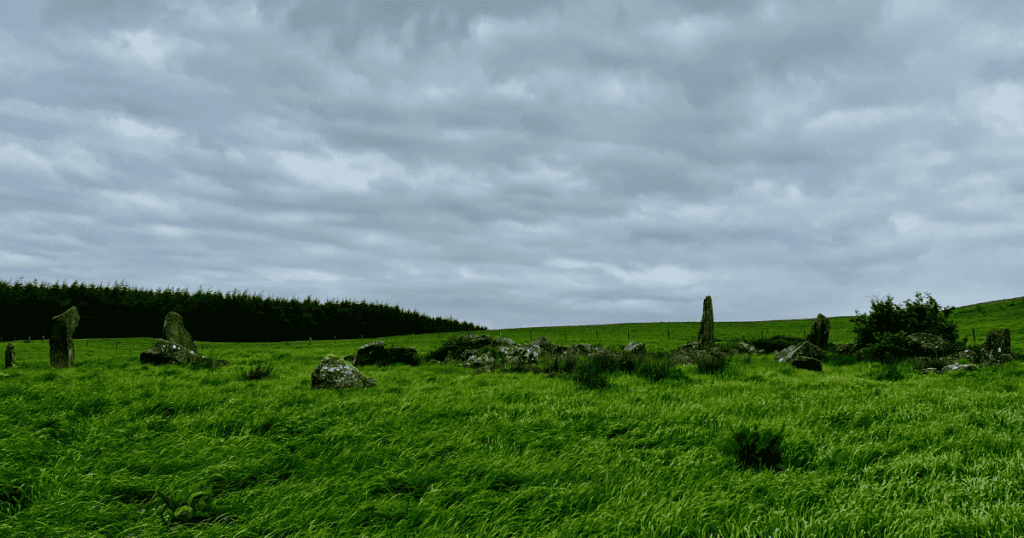
At one time, perhaps more than 30 stones stood in a circle here, some over seven feet tall, which I consider exceptional. However, many have been cleared away, knocked over, or removed through the years. This stone circle is a national monument today.
Doagh Famine Village
The Doagh Famine Village is another attraction we just happened upon while driving. Nestled in the heart of northwest Donegal, It depicts Irish life back to the 1840s and the Great Famine.
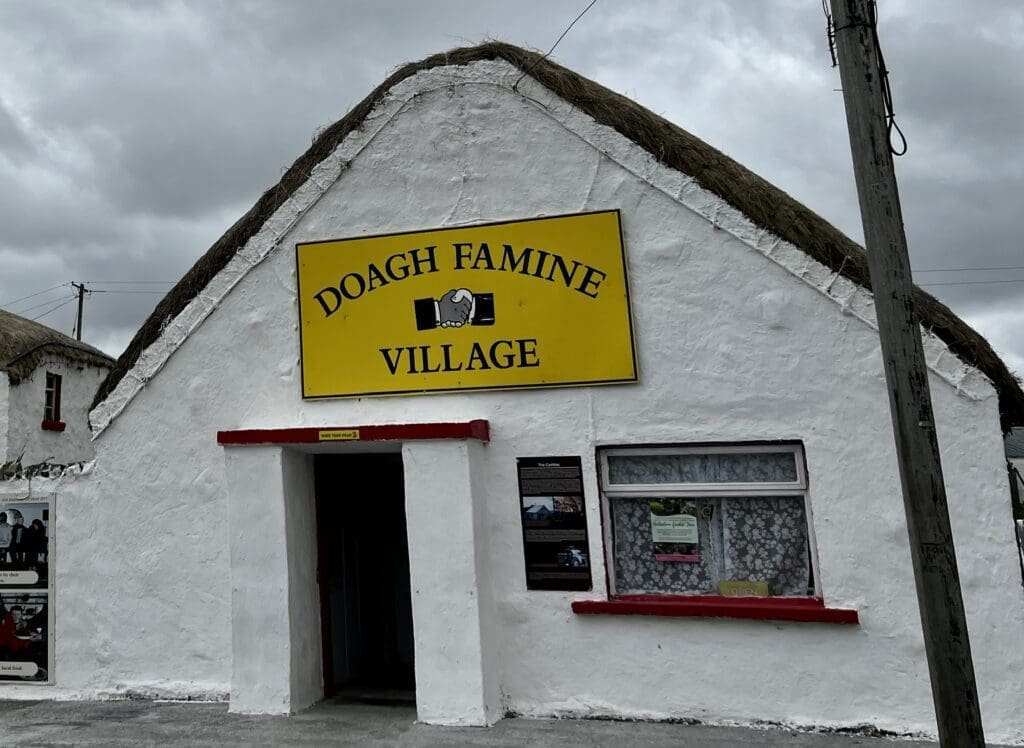
Our first impression as we drove up here was that it would be more of a tourist attraction than we enjoy; however, we were very wrong. The Doagh Famine Village was an incredible walk-through museum providing fantastic information and history about life during the famine.
Fish was a staple in their diets, as was seaweed. The fish was never refrigerated but stored in salt. The salt would keep the fish edible for months.
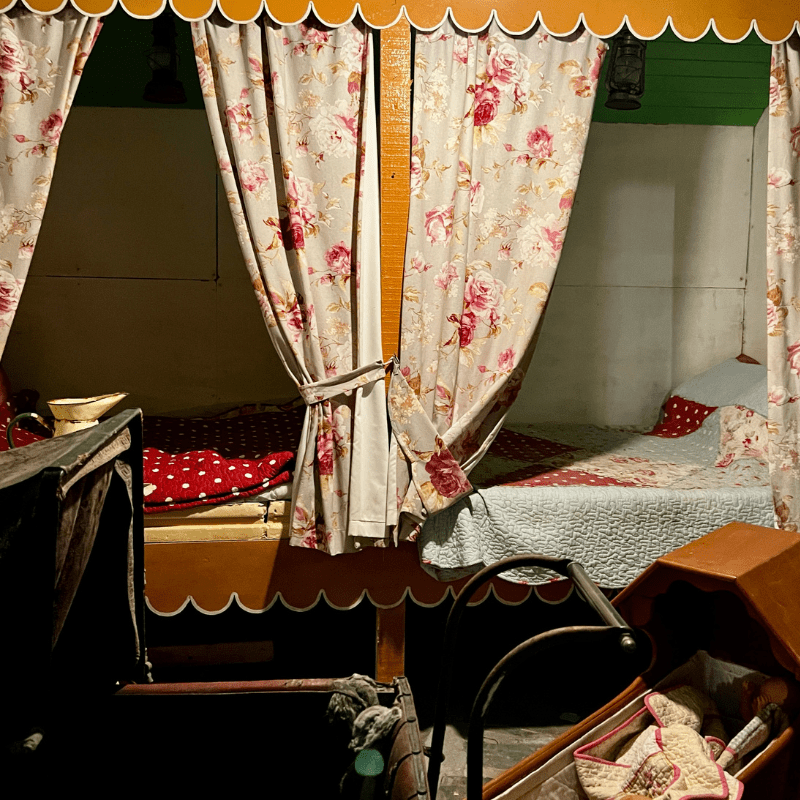
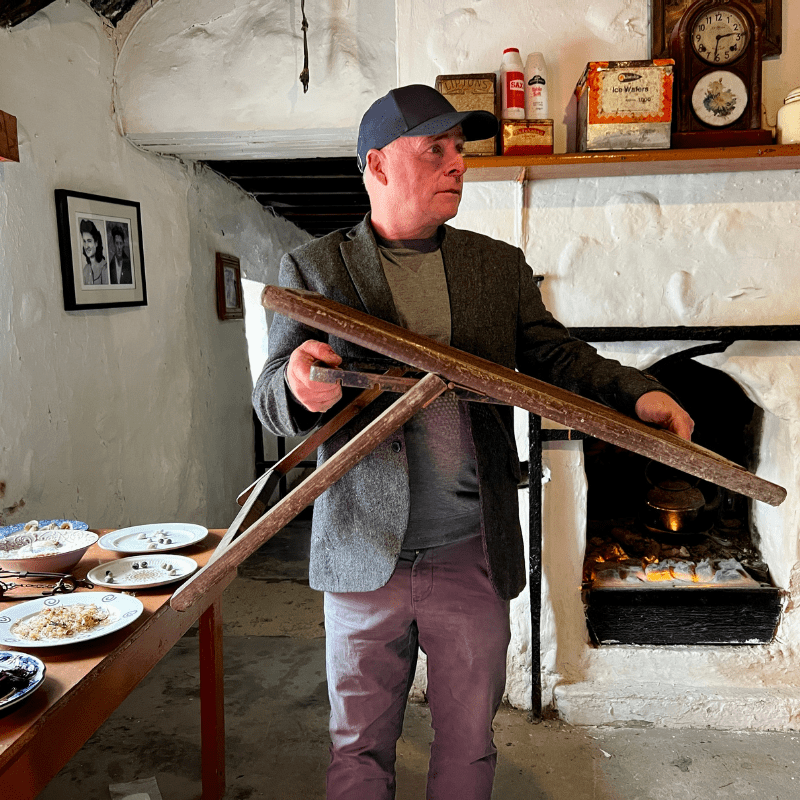

Our guide, Pat or Paddy, lived with his parents and siblings in the first house we entered until the mid-80s. He explained about life in one of these thatched-roof homes. The dining table displayed dishes with samples of the food they had to eat, mostly seaweed; all came from the water.
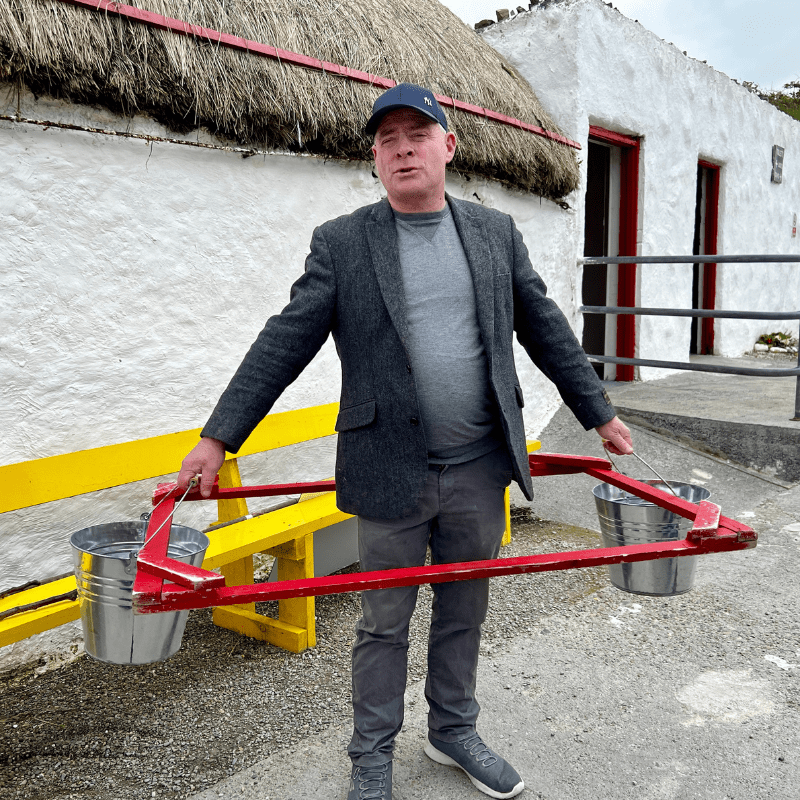
When Paddy was growing up, the families had to carry water daily. Paddy illustrated using a wooden frame to carry two buckets of water. A very clever way to keep water from sloshing out of the two buckets.
This museum relates the story of life in Ireland before the availability of modern conveniences such as electricity, medicine, and food preparation, as we experience today.
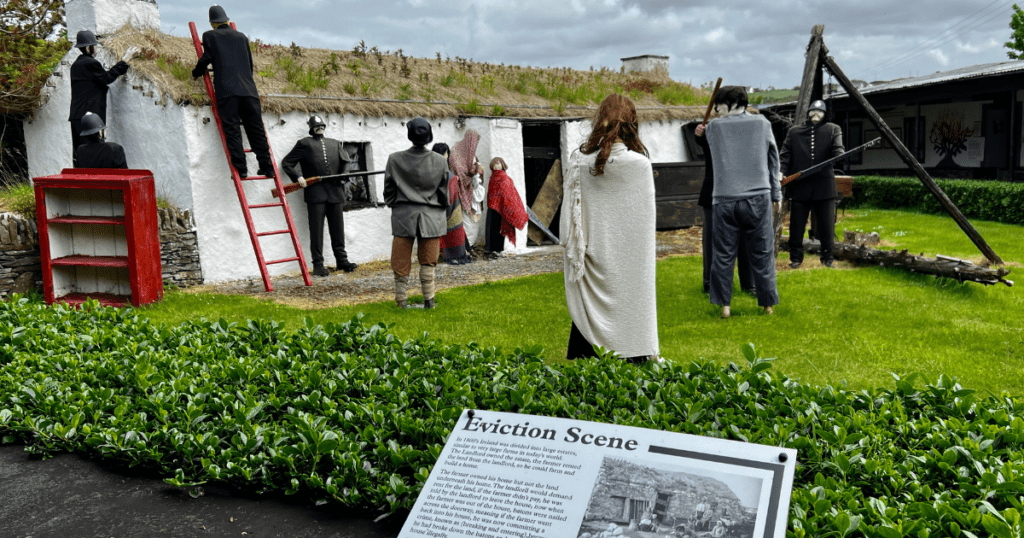
Eviction Scene
A series of dioramas illustrate life at that time and portray scenes in a way that makes them relatable today. From the first ship bringing immigrants to this remote part of Ireland in 1833 to a thriving small country village, the village shows how the local people lived, worked, and played.

President Mary McAleese opened the village on 17 September 2003. Doagh Famine Village is owned and operated by The Doagh Development Association, a local community group.
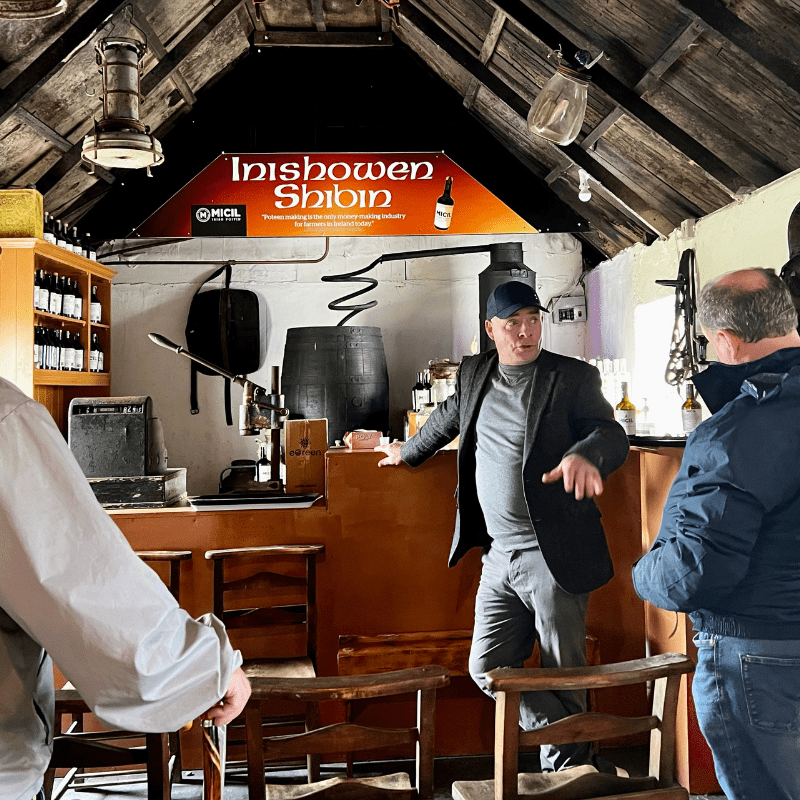
Poteen Still
One of the rooms we toured contained a poteen still, and we were each given samples. STRONG bad-tasting stuff! Our fantastic guide explained the laws and use of poteen in early Ireland.

Paddy explained that the Irish have wakes because they are waiting for the deceased to wake up. That is why the wake always lasts three days.
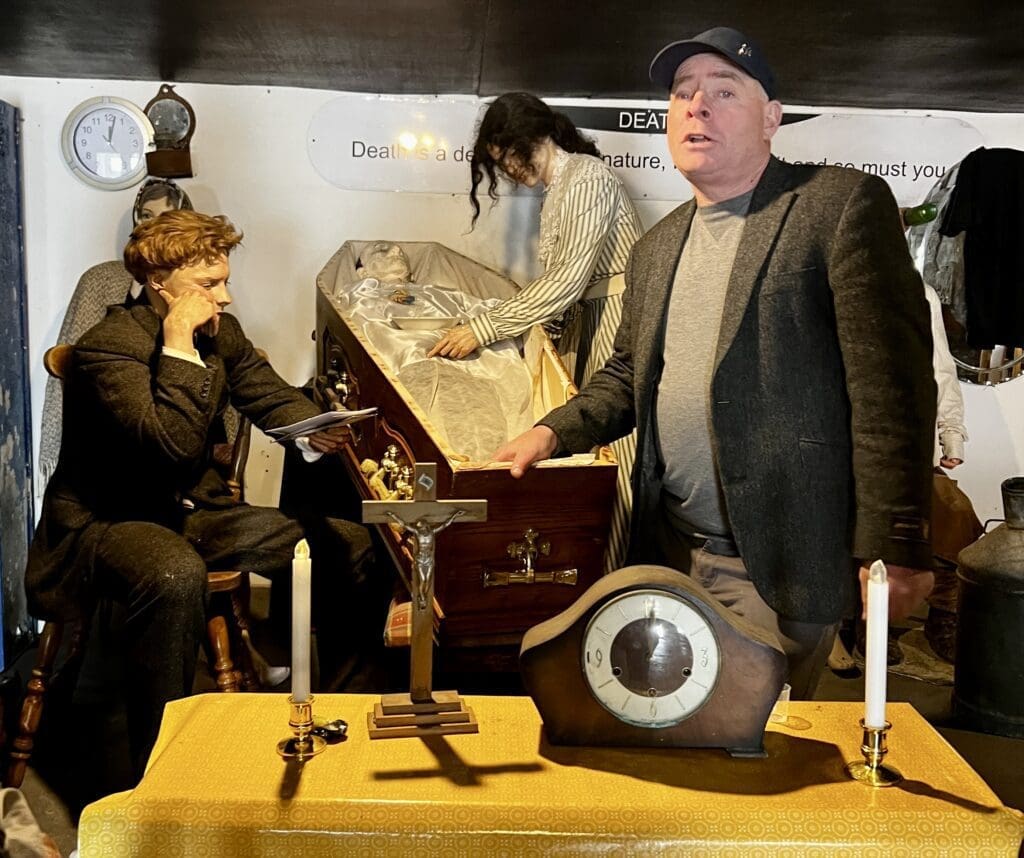
A dish of snuff would always have been laid on the deceased’s chest, and each mourner would be expected to take a pinch as they visited the body. If the body did not wake after three days, it would be said that they “snuffed it!”
We both highly recommend a trip to the Doagh Famine Museum. There is so much to see and learn about Ireland here, and the information is very thoughtfully and sometimes humorously displayed.
We enjoyed these adventures and experiences while staying in the Donegal area. We have visited Donegal in past years and are now trying to find a few more obscure or not-so-famous sights to see as we travel around the country.
Check back as we continue our trek around Ireland, seeing its beautiful sights and learning about its ancient history.
- Derry, Northern Ireland’s walled city
- A day trip exploring Ireland
- Ancient history in County Louth
- Seaside charm, leprechauns, and history
- Nine things to see in Downpatrick, Northern Ireland
- Why do we keep returning to Ireland?
- Must-know tips before traveling to Ireland
- Ireland has its hooks in me!
- Ireland – Making a Plan
